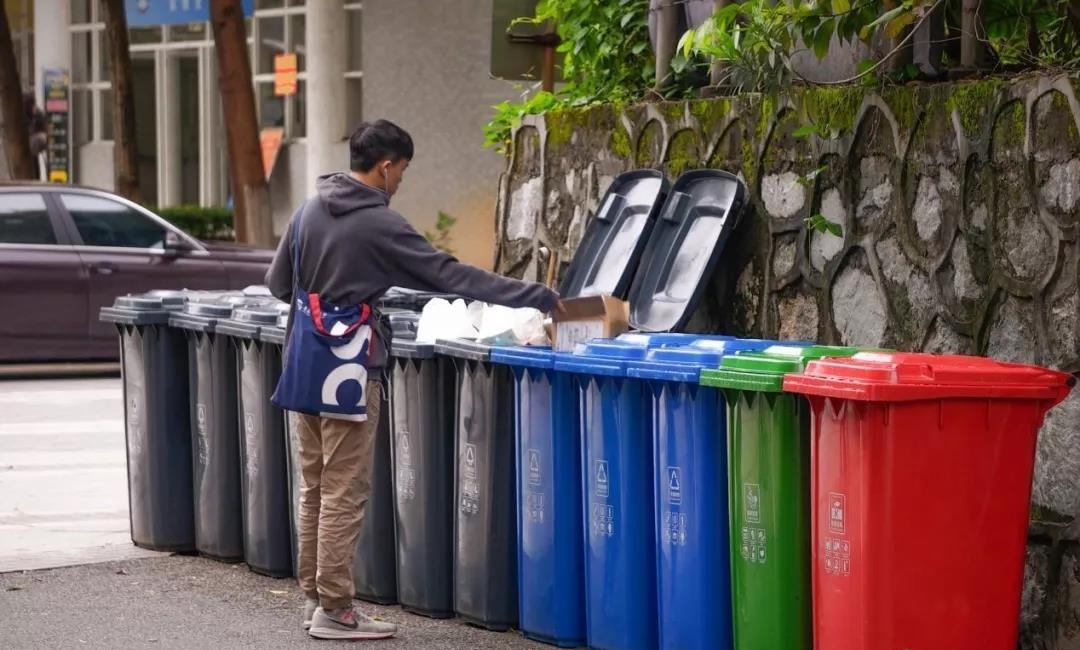
Likes
Recently, some students on the Shipai campus have already found that the garbage bins in the dormitories were replaced by new ones. The reason is that our campus will carry out the management of household garbage starting from November.
As for the upcoming implementation of domestic waste management, there are two frequently-asked questions "How can we classify the waste? And how will the management be performed?” To help you get prepared for the waste management, here’s what you need to know:
How to sort domestic waste?
Domestic waste is divided into four categories: recyclables, kitchen waste, hazardous waste and other waste. Recyclable waste is suitable for recycling. Kitchen waste refers to waste edible oil, vegetables, fruit and other organic perishable garbage. Hazardous waste refers to objects that cause direct or potential harm to human health or natural environment.

Bins of four colors
In order to facilitate students to classify, there will be new trash bins of four different colors at college. The blue bin is for recyclables, the red for hazardous waste, green for kitchen waste, and gray for other waste. Each trash bin is marked with a clear category of waste. Students need to sort their own household garbage and put it into trash bins of different color.
SCNU ready to take action
In order to make students know more about garbage sorting, our university trained student members of the Campus Life Commitee on October 14. Lai Meitong, a member of the committee told us that students are supposed to put the waste into corresponding trash bins at fixed time and places before long.
Xu Tongtong, a teacher from the logistics office, suggested that students separate dry and wet garbage, put waste paper, and express carton boxes into recyclable bins, the residues of takeaway food, and fruit peels into the kitchen waste bin, put cell button batteries into the hazardous waste bin, and unclassifyable waste into other trash bins. After students have sorted the rubbish, cleaners will further sort it. At the early stage, the school will arrange for student volunteers and cleaners to give students guidance.

A student sorts the rubbish at campus
In addition, students need to pay attention to the time; one is the time for kitchen garbage (18:00-19:00), the other is the time for other garbage (7:30-9:30; 18:00-21:00). Many students asked "How should I dispose garbage if I miss the time?”. During the training for students members of Campus Life Commitee, a teacher from Environmental Protection Organization of South China Normal University said, during the early stage of waste management, each school would create an area downstairs for waste management, where the garbage can be put into all day.
Waste management is closely related to the daily lives of all the teachers and students on campus. It requires all your participation. Act from today!
Written by Chen Xiaodan
Proofread by Edwin Baak
Reviewed by Li Jianru
What to read next:










